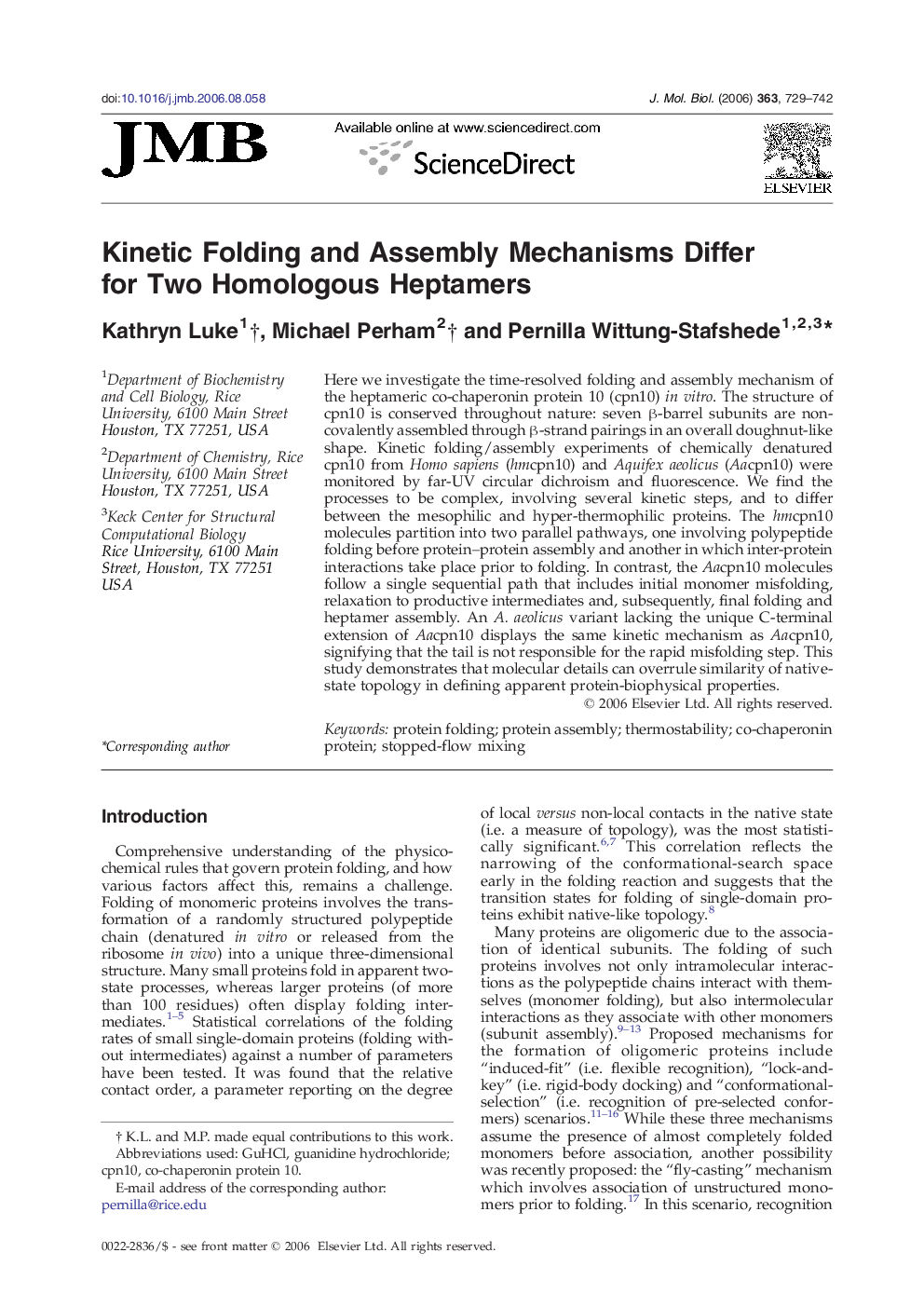| کد مقاله | کد نشریه | سال انتشار | مقاله انگلیسی | نسخه تمام متن |
|---|---|---|---|---|
| 2189101 | 1096197 | 2006 | 14 صفحه PDF | دانلود رایگان |

Here we investigate the time-resolved folding and assembly mechanism of the heptameric co-chaperonin protein 10 (cpn10) in vitro. The structure of cpn10 is conserved throughout nature: seven β-barrel subunits are non-covalently assembled through β-strand pairings in an overall doughnut-like shape. Kinetic folding/assembly experiments of chemically denatured cpn10 from Homo sapiens (hmcpn10) and Aquifex aeolicus (Aacpn10) were monitored by far-UV circular dichroism and fluorescence. We find the processes to be complex, involving several kinetic steps, and to differ between the mesophilic and hyper-thermophilic proteins. The hmcpn10 molecules partition into two parallel pathways, one involving polypeptide folding before protein–protein assembly and another in which inter-protein interactions take place prior to folding. In contrast, the Aacpn10 molecules follow a single sequential path that includes initial monomer misfolding, relaxation to productive intermediates and, subsequently, final folding and heptamer assembly. An A. aeolicus variant lacking the unique C-terminal extension of Aacpn10 displays the same kinetic mechanism as Aacpn10, signifying that the tail is not responsible for the rapid misfolding step. This study demonstrates that molecular details can overrule similarity of native-state topology in defining apparent protein-biophysical properties.
Journal: Journal of Molecular Biology - Volume 363, Issue 3, 27 October 2006, Pages 729–742